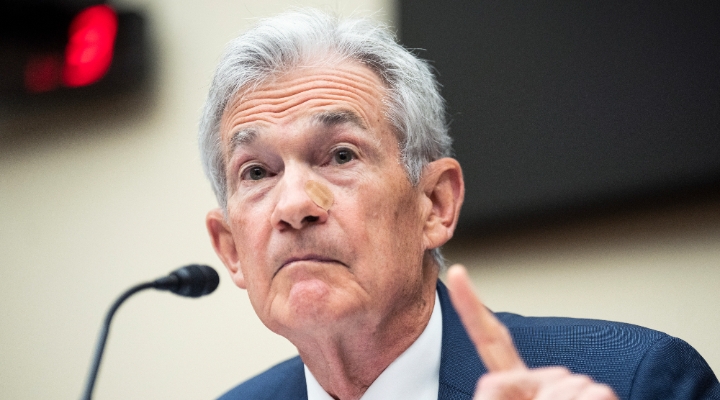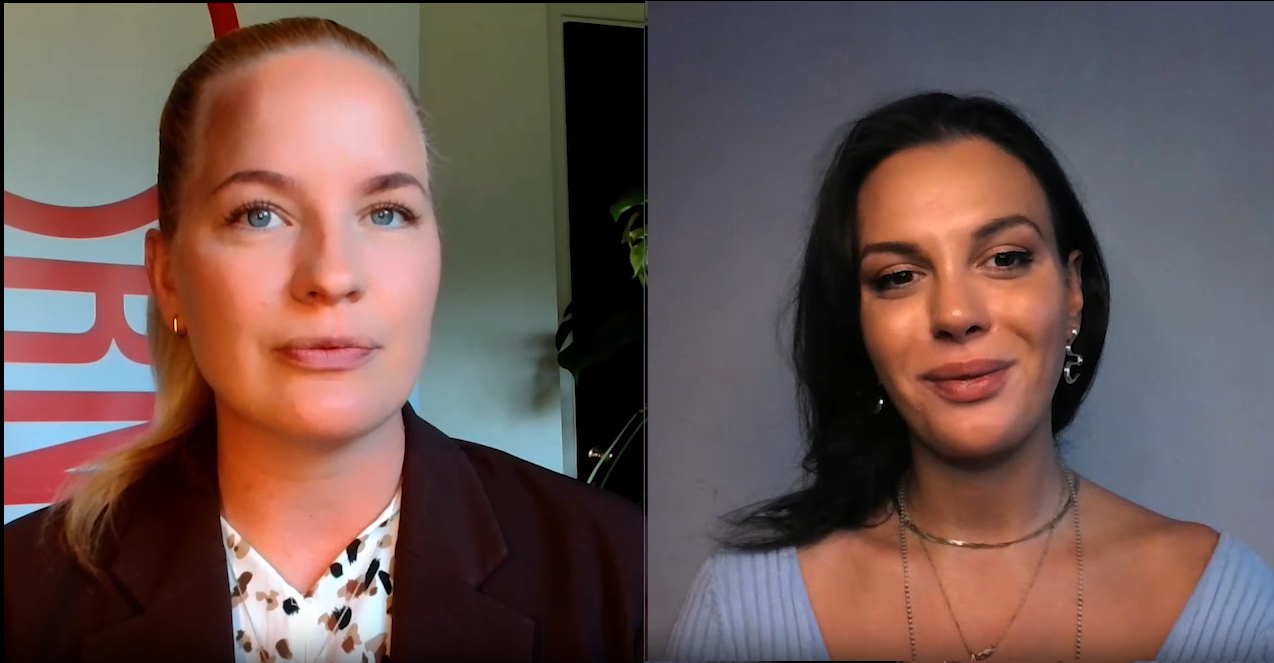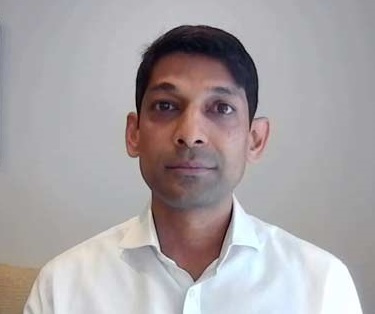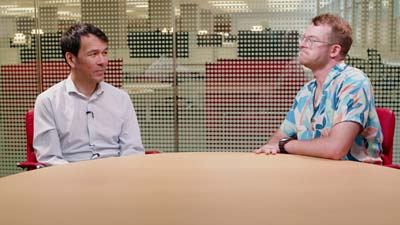Fernando Luque: Hello I'm Fernando Luque, editor for Morningstar in Spain and today I'm joined by Enrico Bovalini. Enrico is Co-Manager with Francesco Sandrini of the Amundi Global Multi-Asset Conservative. Enrico, thank you very much for accepting this interview.
Enrico Bovalini: Thank you for having me on this call.
Luque: Yeah, I think it's a good opportunity to talk about how conservative investors can navigate these markets. And I want you to begin with fixed income, which is obviously the biggest part of your portfolio. What do you think are the opportunities, but also the risk of fixed income for a conservative investor in this environment?
Bovalini: Well, I think that last year was a very difficult year overall because rates were close to zero or even negative. So we have come out from this big bubble in interest rates with negative yield. Now we are back in a phase in which bonds are an interesting area where we can invest because rates have gone up a lot and also the economic momentum is starting to slow down, especially in developed markets. So last year we started in our fund with very low duration, we had like two, two and a half year of duration in the fund because we didn't see a lot of value and we expected to see rising rates. Then since the summer of last year, we started adding to duration because rates were starting to come back to more interesting level. And we think that at present, rates have even overshoot to a level where they shouldn't stay for too long because we see inflation coming down both in US and in Europe and also economic growth that should keep on weakening in the coming quarter, because there were a lot of excess savings both in US and in Europe that now are going to be spent. They are almost all spent and so we expect growth, especially in the consumer space to slow down and also inflation coming further down.
So we think that the Fed is close to its peak in terms of rates, probably they could even do another 25 basis point hikes, but we don't think it's necessary at present. And also in Europe, we think that the ECB is close to the end of the hiking cycle. So overall we see a lot of value in the short to mid-term part of the curve in US where we expect a decent slowdown in economic growth in the next two-three quarters. And so we think that the market will start to price more and more cuts by the Federal Reserve in 2024. So we are at present buying the duration between the two and the five-year space of the yield curve for this reason. On the euro curve, it's a bit different. We think that the ECB could still hike again by another 25 basis points. The process of slowdown in inflation is a bit lagging than the US because the ECB started later in hiking rates. But we think that the path will be similar, so at present also we have been adding to duration and in our fund overall we are close to 4.7 year in term of duration from the 2.5 last year. So we have almost doubled the duration exposure just for this reason.
On the credit side, the story is a bit different because since we expected this slowdown in economic growth, we are not very much exposed to high yield bonds because there we think that there is the risk of widening spreads in coming months with more negative news on the economic cycle. Spreads usually widen much more than current level during a recession. Based on the investment grade that the situation is more mixed, the spreads are already quite wide compared to the last 25-year history, and so we expect that there could be a small widening. But anyway the (indiscernible) is positive and so we are with roughly 1.5-year duration in credit investment grade in our fund and that's mostly our position.
Luque: Regarding equities, correct me if I'm wrong, but I think you have a very low exposure to equities, especially if we compare to previous years. And I think it's even the lowest equity exposure of the fund. What are the reasons for these low equity exposure?
Bovalini: Yeah, our fund doesn't have a benchmark. So we really have a budget of risk and we decide where to allocate these risk across different asset classes. When we see better opportunity in equity, we can reach even 30% of exposure. That's really our max allowed equity exposure and in the past we were close to that level. Since December of last year we started reducing equity risk because we think on one side that valuation are pretty standard, especially in the US equity market, but now it's becoming a feature also of other developed markets. And on the other side, we see the risk of decline in earnings growth, especially for developed markets again.
Companies across the US, Europe and Japan are making extraordinary margins at present because with this big rise in inflation and in inflation expectation, they were able to hike a lot prices, even if the cost of production wasn't rising so fast. So they have managed to raise a lot of the margins level and now we are at the peak margin across all developed markets. Going forward we expect that inflation will come down. So the level of rising prices won't be there. The consumption also will decline a bit. And on the other side, the cost of wages mostly should still keeping on rising a bit in developed markets. So we think that margin will start to compress. And this should lead to a decline in earnings growth, mostly in US but also in Europe.
So high valuation especially in US and peak margins with a decline in revenue growth we think are the ingredients to be less exposed to equity risk in the portfolio. The only area where we are a bit more positive is the emerging markets part. Now we are seeing a lot of news coming also on the fact that China reopening is not so strong as expected. But anyway at least the valuation in some region in emerging markets are still pretty low. There are also geopolitical reasons for this matter, but anyway, we expect earnings growth accelerating, especially in China in the next two-three quarters and also in all the countries around China like Thailand, Indonesia and so on. And so we think this is an area where there should be an interesting decoupling from the economic development in developed markets. Also, the peak in the US dollar that we expected should come, should be another positive for emerging assets. So overall we think it's better to be more exposed to emerging market equities rather than developed markets.
Luque: Okay, perfect. And my last question is about gold, because you have, let's say, a decent exposure to gold compared to other conservative funds. Tell me your view on including gold in a prudent portfolio or conservative portfolio.
Bovalini: Well, in our funds, usually we have some small exposure to commodities in general and we try to play it in a very dynamic way to be exposed to the commodity that we think will do the best in the coming quarters. Last year, for example, we had decent exposure to oil. And we gained it was one of the few assets they were going up in 2022. Since then we have cut a lot of oil exposure. Now it's almost at 0, because in a declining growth environment, we think that we don't want to have exposure to cyclical commodity. On the other side, gold is mainly beneficiary of declining real rates. Real rates at present are quite high in US they are above 1.5% and we think are well above the average level they should have through the cycle. There is so much depth in developed markets, but also in some emerging markets like China that the level of real rates we think it should stay closer to 0-0.5%. So with the slowing down in economic growth and the slowing down in the rate of inflation, we expect that real rates will start to decline in coming months, also because central in the developed markets, the fiscal level cannot be used too much deficit to GDP are already very high both in US and in some European countries. So it's really a matter for central banks to start easing again monetary condition in coming quarter when the economy will be softer. So in this scenario gold should perform very well and that's why we are keeping roughly 3.5% in the fund at present.
Luque: Perfect Enrico, thank you very much for your views on how a conservative investor can construct his or her portfolio. Thank you very much Enrico.
Bovalini: Thank you a lot.




























